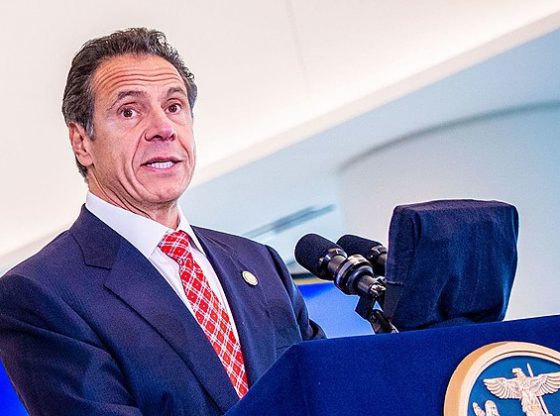During President Biden’s State of the Union address, he tried to blame his predecessor, former President Donald Trump, for today’s mental health crisis. But the reality is America’s mental health is getting worse under Biden.
“Four years ago next week, before I came to office, the country was hit by the worst pandemic and the worst economic crisis in a century,” Biden said Thursday night. “Remember the fear, record losses … a mental health crisis of isolation and loneliness. A president, my predecessor, failed the most basic presidential duty that he owes to American people: the duty to care. I think that’s unforgivable.”
Mental health should be non-partisan. Forgive us, President Biden, for not buying this narrative because under your watch, America suffers soaring record suicide and depression rates.
The Centers for Disease Control and Prevention’s (CDC) National Center for Health Statistics late last year released provisional data showing 49,449 people committed suicide in the United States in 2022. The roughly 3% increase from 2021 is the highest number ever recorded and the highest rate since 1941.
Suicides have increased at a mostly steady clip this century, rising among men and women in almost every age and race group, CDC reports, leading the U.S. Surgeon General to launch a national suicide prevention strategy in 2021.
Just Thursday, the Pentagon inspector general confirmed it’s launching an inquiry into Navy suicides. Current clinical depression and diagnosis both hit new highs last year, Gallup found — more than two years into the Biden administration.
Men, especially senior men, are more likely to die by suicide, but women’s suicide rate rose more rapidly than for men in 2022 — by 4% for women, compared to 1% for men, according to the CDC. Women ages 25 to 34 saw nearly a 7% increase in 2022, with Gallup reporting young women most diagnosed with depression. These troubling trends among women of childbearing age bode poorly for America’s future birth rates.
Today, the generational divide is stark compared to when Gen X women were younger. Suicides comprised 4.4 deaths per 100,000 among Gen X women when they were ages 25 to 34, alarmingly rising to 7 deaths per 100,000 women among today’s Millennials, according to a 2023 analysis by by the Population Reference Bureau (PRB).
Why are America’s young women killing themselves more often? Evidence suggests partially, as PRB notes, “the rise of social media platforms that are central to the social lives of many young women … use of these platforms has also been associated with poor body image, low self-esteem, worsening mental health, and increased suicide and selfharm behaviors.”
In 2021, The Wall Street Journal exposed internal documents showing Instagram leaders knew the platform harms young women’s mental health, yet willfully downplayed its effects.
Sadly, my family struggles mightily with mental illness, though I’ve investigated and found tools that help. I grew up one of seven biological siblings with a violent, mentally-ill, street-musician father. A cult leader claiming he was a prophet that would someday become President of the United States, my dad said Satan “reassigned” lesser demons to personally torment our family.
Multiple siblings attempted suicide, two brothers developed schizophrenia — one who sexually assaulted me and attempted to rape me when I was 17. We lived a transient lifestyle, skirting authorities by constantly moving. Besides various houses, we lived in motorhomes, tents, mobile homes and sheds.
One of my five brothers was born in a tent while our family lived in the public campground woods of Greenbelt Park, Maryland. Along the way, I attended 17 different public schools and homeschool. I took the ACT when we lived in a shed in the Ozarks with no running water.
The oldest girl but fifth in birth order, I escaped first. I left at age 18, despite my dad’s “prophecies” of my rape and death should I leave the cult. I was declared legally estranged from my parents, who would not allow me to visit because they claimed I was satanic and would corrupt my siblings.
Dad said my “blood changed” when I left home, and I got photoshopped out of family pictures. Striving to avoid a victimhood mentality, I graduated college with honors, landed a full tuition scholarship to Harvard for a master’s degree, and worked on Wall Street before returning to my first love, journalism.
For many years, I expertly put up false fronts. Most people had no idea I endured this trauma.
But all those false fronts built enormous pressure, which built up and burst, landing me in the hospital nine times. I was broken by anxiety, depression, PTSD, fibromyalgia and episodic suicidal ideation. I learned the hard way about keeping troubles bottled up.
After numerous unexpected turns, I returned to God, baptized Protestant Christian in 2017, ultimately able to forgive my dad and heal from mental illness. But I also wrestled with knowing sometimes people use God’s name for abuse. God helped me understand abuse in his name is not God’s will. Once I let healthy faith back into my life, my mental illness subsided.
I’m not alone. Robust scientific evidence shows faith saves lives. For example, women attending weekly religious services are 68% less likely to die from “deaths of despair” — suicide, drug overdose and alcohol poisoning. Men are 33% less likely if they attend services at least once a week, according to 2020 research led by Harvard University’s School of Public Health.
A review in Psychiatric Times of 93 studies found two-thirds of the studies showed lower depression rates among more religious people.
Healthy faith in God saves and restores mental health. My life is a testament to that. My hope is our country crosses partisan battle lines to tackle this escalating problem together.
Carrie Sheffield on March 11, 2024
















